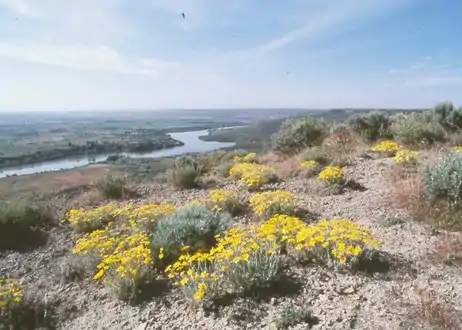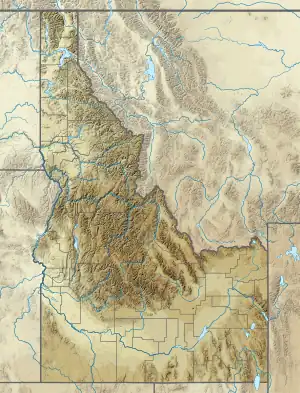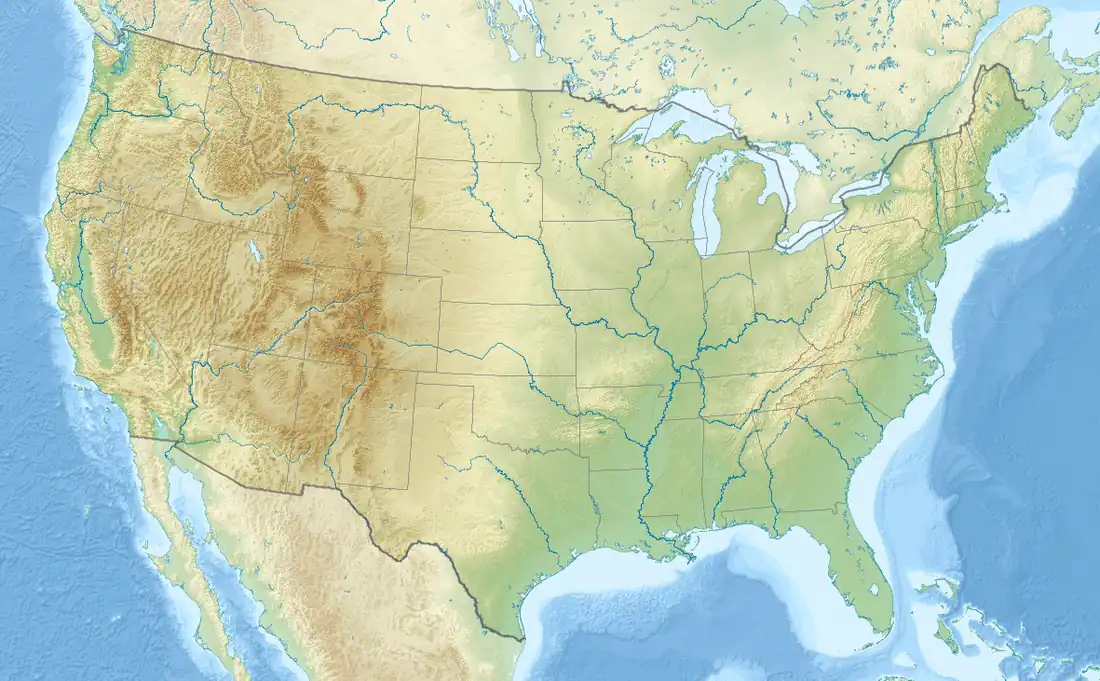Hagerman Fossil Beds National Monument
Hagerman Fossil Beds National Monument near Hagerman, Idaho, contains the largest concentration of Hagerman horse fossils in North America. The fossil horses for which the monument is famous have been found in only one locale in the northern portion of the monument called the Hagerman Horse Quarry. The 4,351-acre (17.61 km2) monument is internationally significant because it protects the world's richest known fossil deposits from the late Pliocene epoch, 3.5 million years ago. These plants and animals represent the last glimpse of that time that existed before the Ice Age, and the earliest appearances of modern flora and fauna. This is also significant because the fossils present during this period of the Pliocene represent species which were alive during the early stages in the evolution of humans, albeit on a different continent. The fossil beds were designated a National Natural Landmark in 1975 and was reclassified as a National Monument in 1988.[3][4]
| Hagerman Fossil Beds National Monument | |
|---|---|
 View over Snake River in the National Monument | |
  | |
| Location | Twin Falls County / Gooding County, Idaho, United States |
| Nearest city | Hagerman, ID |
| Coordinates | 42°47′25″N 114°56′43″W |
| Area | 4,351 acres (17.61 km2)[1] |
| Authorized | November 18, 1988 |
| Visitors | 25,982 (in 2016)[2] |
| Governing body | National Park Service |
| Website | Hagerman Fossil Beds National Monument |
| Designated | 1975 |

In 2021, Hagerman Fossil Beds entered a 25-year partnership with the Idaho Department of Parks and Recreation, which manages the six units of Thousand Springs State Park. The new Thousand Springs Visitor Center at the Billingsley Creek unit, opening in 2022, will feature all-new fossil exhibits and host ranger programs and other activities.[4]
Notable fossils
- Hagerman horse, Equus simplicidens, formerly known as Plesippus shoshonensis
- Camelops, an extinct genus of camel that once inhabited North America
Many other species are also found in the fossil record, including mastodons, saber-toothed cats, and bone-crushing dogs (Borophaginae), as well as various species of fish, frog, vole and beaver.
References
- "Listing of acreage – December 31, 2011" (XLSX). Land Resource Division, National Park Service. Retrieved 2012-05-14. (National Park Service Acreage Reports)
- "NPS Annual Recreation Visits Report". National Park Service. Retrieved 2017-08-18.
- "Hagerman Fossil Beds". nps.gov. National Park Service.
- Hagerman, Mailing Address: PO Box 570; Us, ID 83332 Phone: 208 933-4105 Contact. "History & Culture - Hagerman Fossil Beds National Monument (U.S. National Park Service)". www.nps.gov. Retrieved 2023-02-14.
External links
 Media related to Hagerman Fossil Beds National Monument at Wikimedia Commons
Media related to Hagerman Fossil Beds National Monument at Wikimedia Commons Hagerman Fossil Beds National Monument travel guide from Wikivoyage
Hagerman Fossil Beds National Monument travel guide from Wikivoyage- Official Hagerman Fossil Beds National Monument website